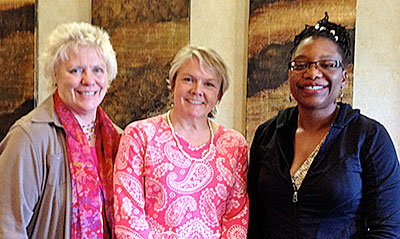An intelligent team—sounds good, huh? But what is it and how do you get it? These are the questions I am preparing to answer on Wednesday when I lead a workshop at Southern Oregon University for members of a high-tech company, timber products company and municipality. And while these seem like disparate organizations, the concepts and steps needed to create intelligent teams are the same for all.
Let’s start with a description. Anchored in constructive collaboration, intelligent teams optimize functioning for enhanced performance, greater productivity and intense creativity. They are critical to successfully navigate the changes we face daily in today’s organizations.
An intelligent team is deeply fluent in the competencies from emotional and social intelligence—the ability to interpret and manage your own emotions to the benefit of the situation and to read and respond with empathy to the feelings of others. Add to this an understanding of social situations and a big-picture perspective. In other words, it’s moving from a frame of “I” to “you” and then “we.”
An intelligent team takes this a step further and employs Relationship Systems Intelligence—the capacity to move beyond personal concerns to a powerful, generative group identity with resilience and resources to address challenges as our world transforms. Sound amazing? Well, it is!
My knowledge of this topic comes directly from hands-on training I received over the last four years at CRR Global’s Organizational Relationship Systems Coaching workshops and from reading CRR founder Marita Fridjhon’s 2016 book, Creating Intelligent Teams. Marita coauthored the book with Anne Rød. My thanks to Marita for permission to quote/paraphrase liberally.
In this blog, I will share the five principles of Relationship Systems Intelligence (RSI) and give you a few things to consider while contemplating your organization’s intelligence. Future blog posts will delve deeper into this subject, so stay tuned!
Five Principles of Intelligent Teams
- Each relationship system (team) has its own unique entity.
- Every member of a relationship system is a Voice of the System.
- The team has the answers.
- Roles belong to the team, not the individuals.
- Change is constant.
What Does This Mean?
- Each relationship system has its own unique entity. Any time there are two or more people, they create a “system” or “team entity.” This thing is bigger than the sum of its parts. Intelligent teams are aware of the system and together act as a system—as a “we” vs. a “you” or “me.”
- Every member of a relationship system is a Voice of the System. (Everyone is right—partially!) A strong system is one where all members’ voices are heard, which only happens with trust and willingness to share without repercussions. Together, they can add enough information to the system to create an intelligent entity.
- The team has the answers. This is one of my favorites! We hold true that relationship systems are naturally intelligent, generative and creative. Kind of like the old 1+1=3 equation and underscored by mutual accountability and responsibility to speak up. Disagreement is good—it’s simply what can happen as more information (voices) is added to the system as it works toward intelligent outcomes.
- Roles belong to the team. Relationship systems rely on roles for their organization and execution of functions. For example, there are functional roles (boss, customer service, IT) and emotional roles (peacekeeper, visionary, truth-teller). These roles belong to the system, not the individuals who inhabit the system. If a person leaves the system, the system regenerates and fills the roles as necessary.
- Change is constant. Relationship systems are in a constant state of emergence, always in the process of expressing their potential. By noticing signals, team members can explore hidden opportunities and help the entity remain open to new ideas and inspirations that would not be accessible to an individual.
In my next post, I’ll explore the key competencies of an intelligent team along with pointers on how to develop those key competencies. In the meantime, take a look at your own team/organization and get a sense as to where you are now.
Here are a few things to consider (straight from the book):
- How would you describe the leadership in your team and organization?
- Who are your colleagues? How many are Millennials? Other? How are you bridging the generation gap and working together optimally?
- Gen Z, iGen or Centennials: Born 1996 and later. (<21)
- Millennials or Gen Y: Born 1977 to 1995. (22–40)
- Generation X: Born 1965 to 1976. (41–52)
- Baby Boomers: Born 1946 to 1964. (53–71)
- Traditionalists or Silent Generation: Born 1945 and before. (>72)
- How well do you know your colleagues’ background, talents, special skills? How often do you use their specialized knowledge?
- How often and in what situations do you and your colleagues work as a team system rather than independent individuals?
- How high do you think the level of RSI in your team is?
Questions?
Please call or email me. Let’s see what’s possible in developing the intelligence of your team.






